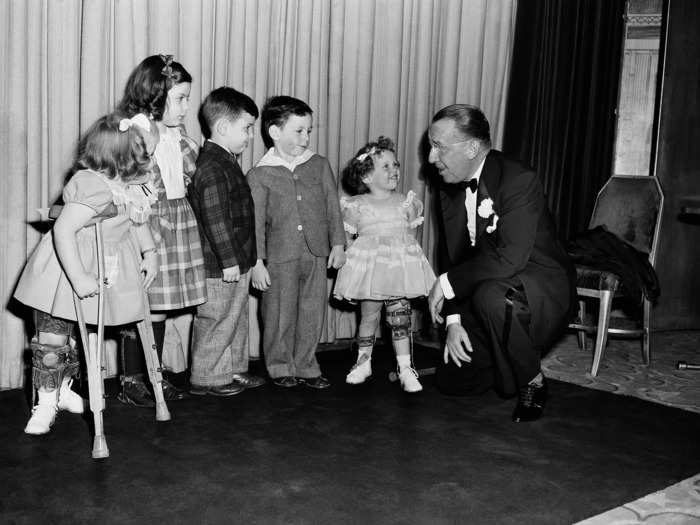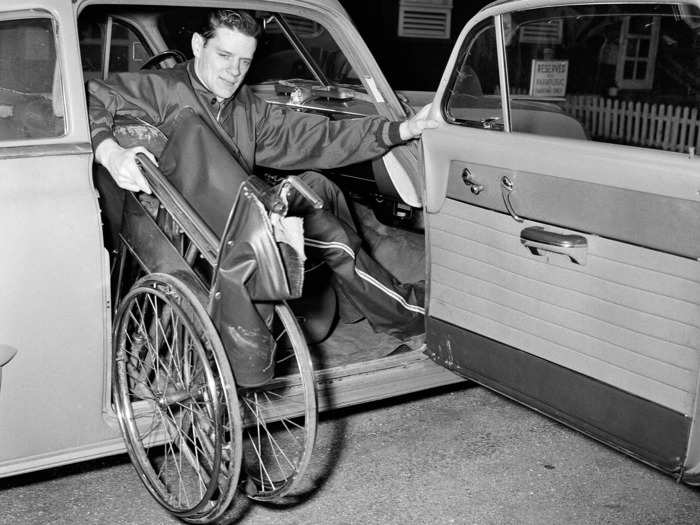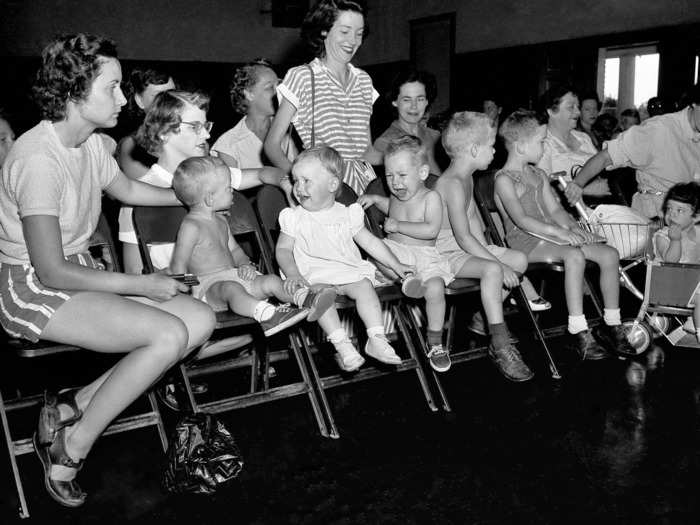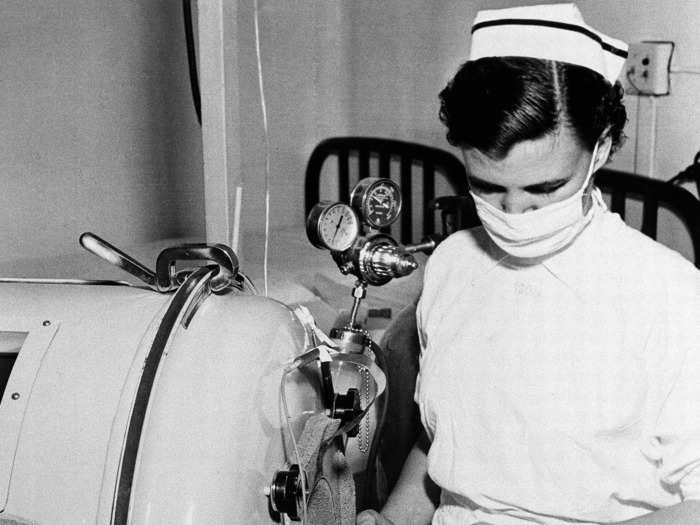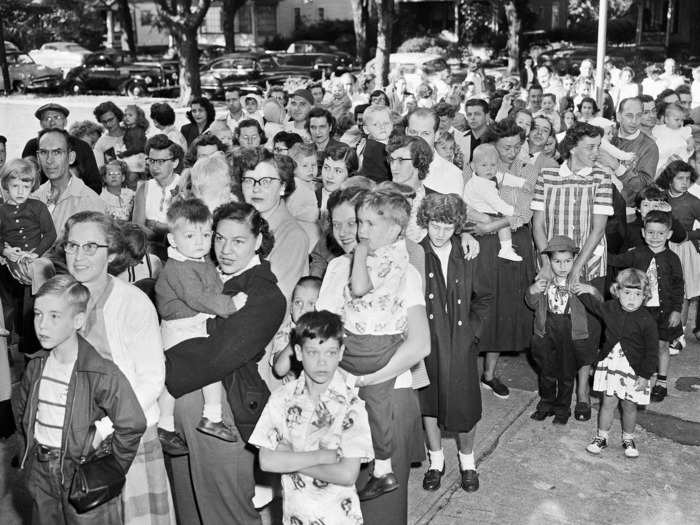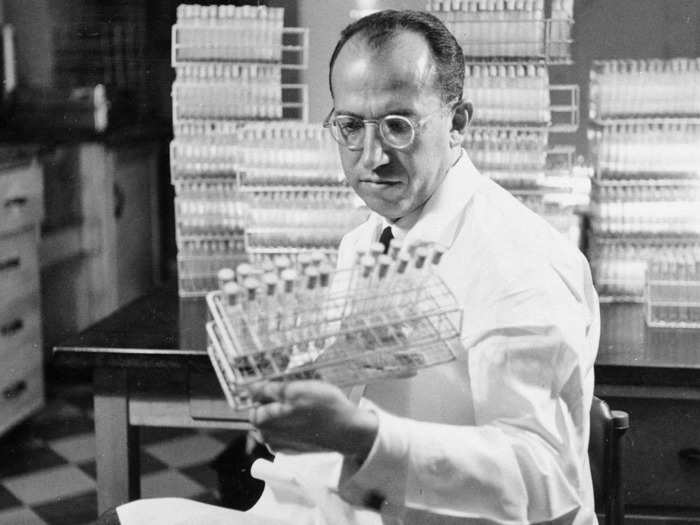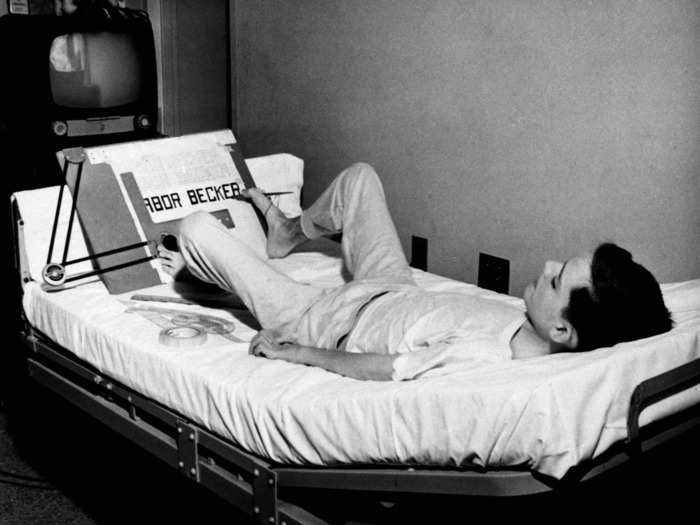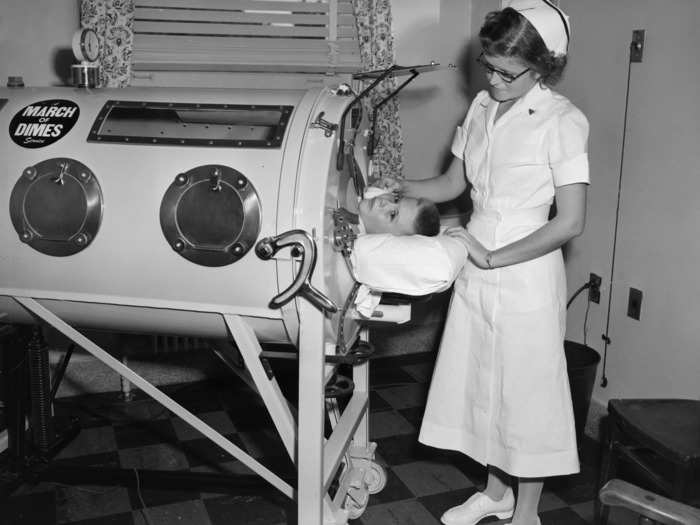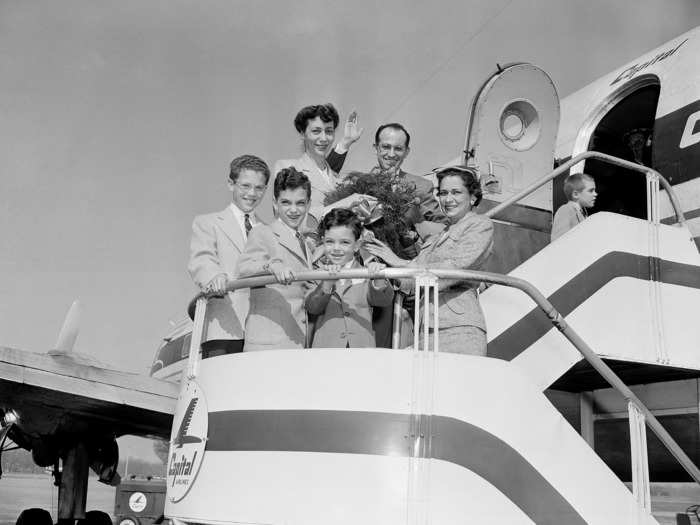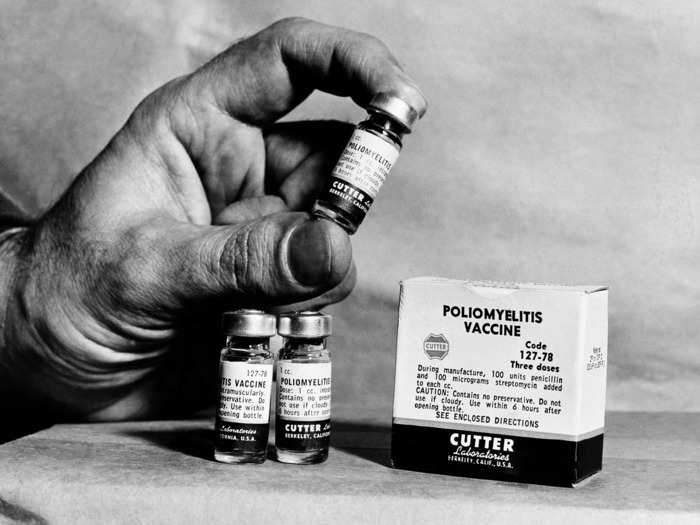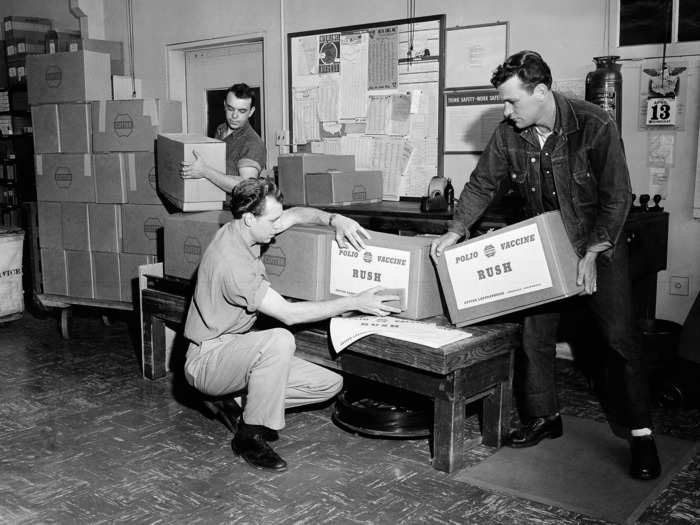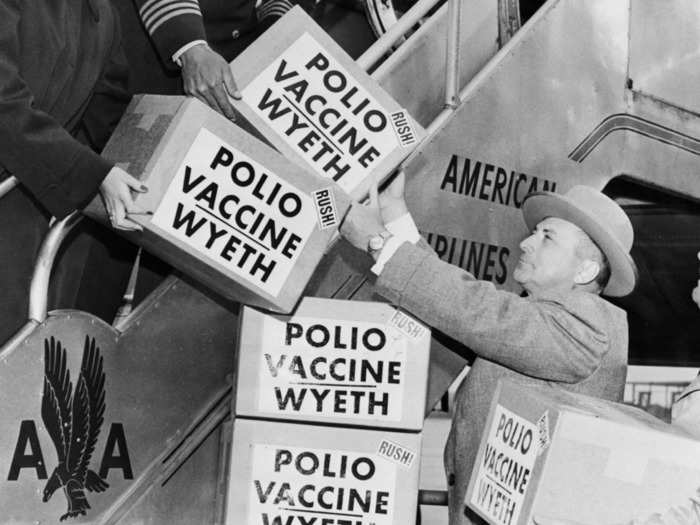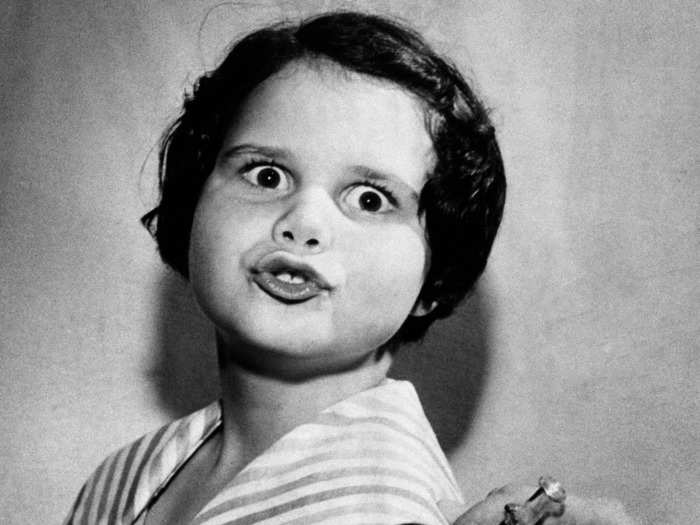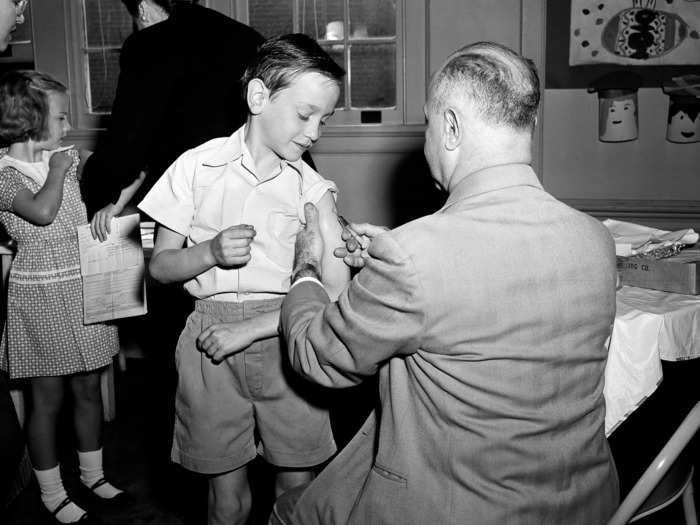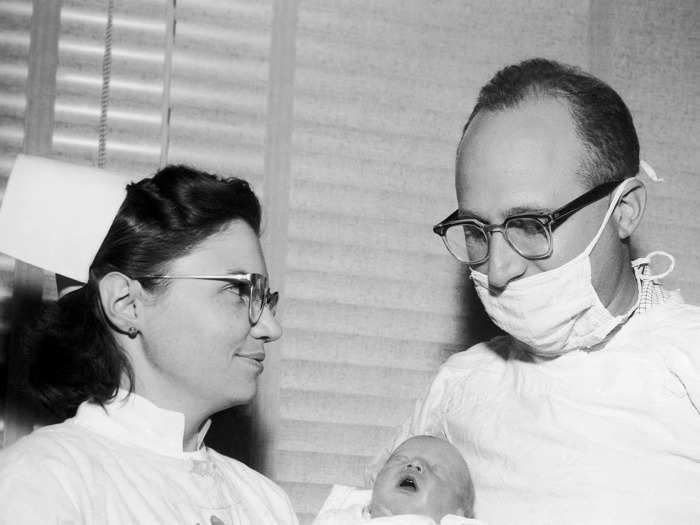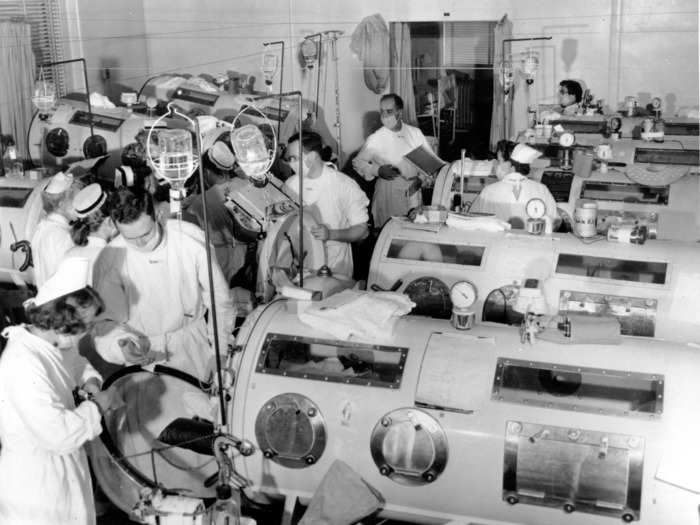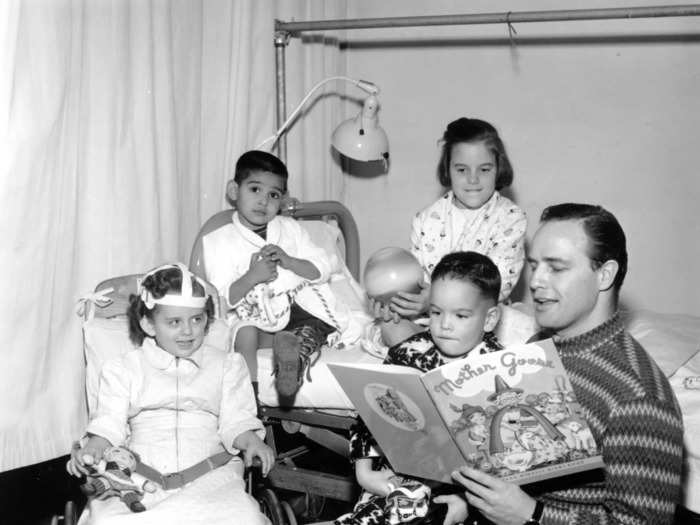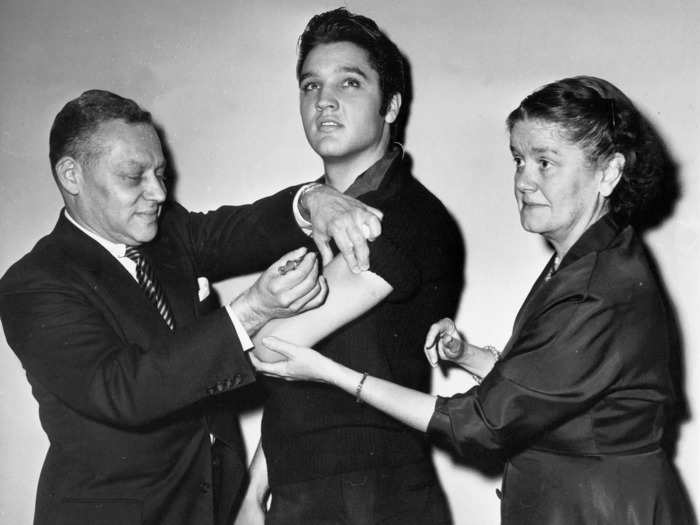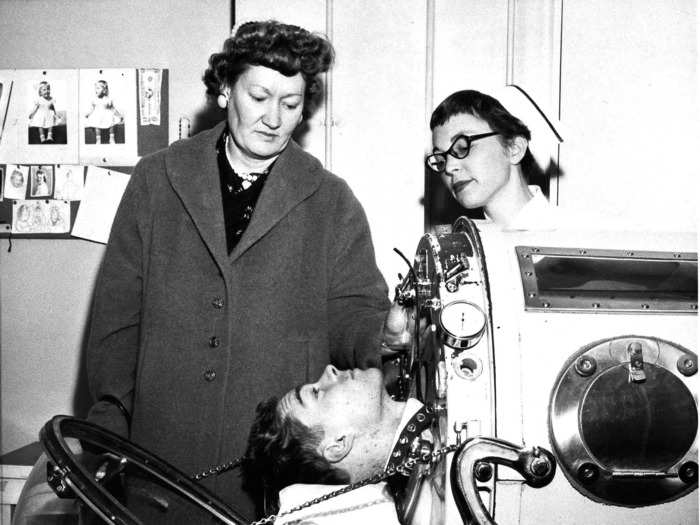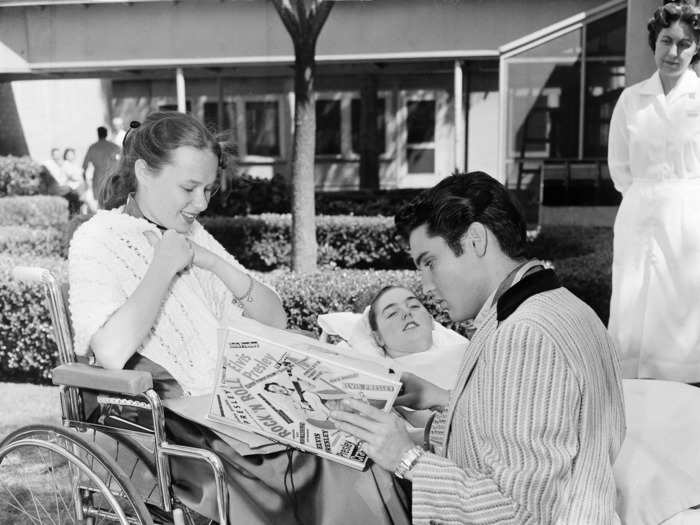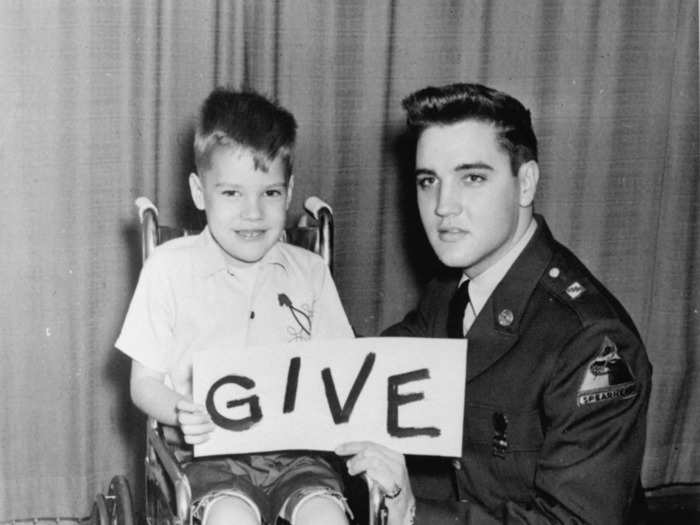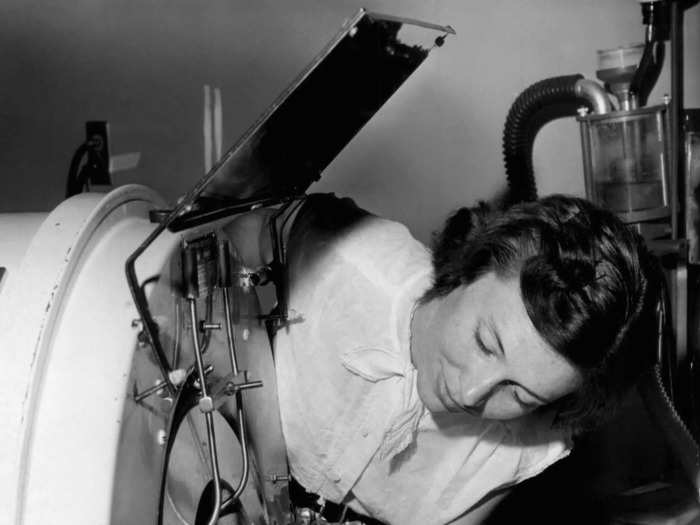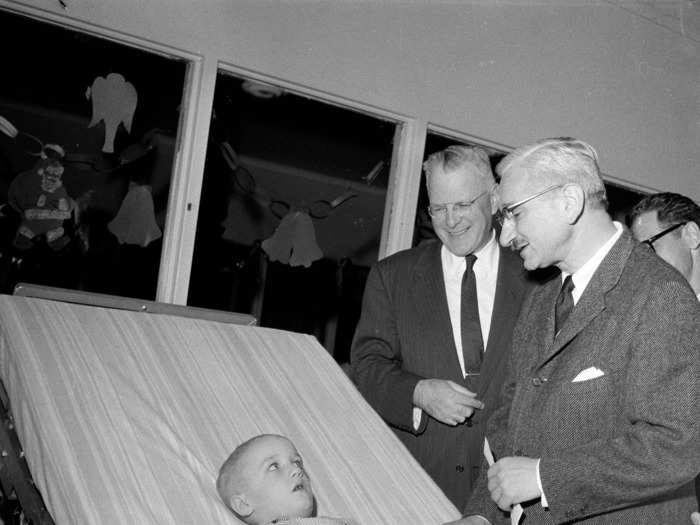Oct. 28, 1956: Elvis Presley receives the polio vaccine in New York City.AP Photo
- New York City Health Department officials announced on August 12 that they've identified traces of the poliovirus in the city's sewage system.
- Since 1979, there have been no cases of wild polio originating in the US, according to the CDC.
- Before vaccines were made available in 1955, the disease caused 15,000 cases of paralysis each year in the US.
In the 1950s, cases of poliovirus ravaged the US, with hospitals wards brimming with disabled or severely ill patients, according to the National Library of Medicine.
At the outbreak's peak in 1952, polio infections caused 20,000 cases of paralysis, leaving families with no choice but to isolate in fear, as the disease was once one of the most transmissible diseases among kids.
In 1955, an effective polio vaccine was introduced by Dr. Jonas Salk, which dramatically reduced infections. The virus was eliminated in the US in 1979, but it can still be brought to the country by travelers, according to the Centers for Disease Control (CDC).
On August 12, The New York City Department of Health announced polio had been identified in New York City's sewage system.
Dr. Jay Varma, director of the Center for Pandemic Prevention and Response at Weill Cornell Medicine, previously told Insider that New Yorkers who are vaccinated have nothing to worry about yet, but if you're unvaccinated, you should "rush" to get shots.
She said seeing polio in New York is a "worrisome sign," and "an indication that our public health infrastructure is not as strong as it needs to be to keep Americans safe."
Most people who contract the virus will experience mild symptoms, but infection can lead to paralysis in one out of 200 patients, according to the CDC.
Just the mention of polio in 2022 conjures up images of a 1950s America, with kids lined up to receive vaccines and patients confined to iron lung respirators at the endemic's height.
Here are 25 historic photos illustrating the impact of the disease and the distribution of vaccines.
January 8, 1952: 5 children with polio meet Basil O'Connor, president of the National Foundation for Infantile Paralysis (NFIP), during a ceremony for his 60th birthday.
Matty Zimmerman/AP Photo
March 7, 1952: Jack Chase, a student at the University of Illinois, lifts his wheelchair into his car after contracting polio while serving in Korea in 1946.
Edward Kitch/AP Photo
July 2, 1952: Mothers in Houston, TX wait with their children to be inoculated with gamma globulin to prevent paralysis from polio.
Carl E. Linde/AP Photo
September 23, 1952: Two-month-old Martha Ann Murray is watched over by a nurse in an iron lung.
AP Photo
July 1, 1953: A line of children and parents wait to be immunized with gamma globulin, which later turned out to be ineffective at protecting against the disease.
Paul E. Thomson/AP Photo
October 7, 1954: Developer of the polio vaccine, Dr. Jonas Salk in a laboratory in Pittsburgh, Pennsylvania.
AP Photo
1954: Dr. Jonas Salk gives a shot of the polio vaccine to a girl during test trials.
Bettmann/Getty Images
January 8, 1955: Polio patient at the Respirator and Rehabilitation Center in Omaha, Nebraska, Larry Becker, draws a hospital floor plan using his right foot due to his paralysis.
AP Photo
1955: A nurse oversees a boy with polio in an iron lung.
Kirn Vintage Stock/Corbis/Getty Images
April 16, 1955: Dr. Jonas Salk arrives in Pittsburgh, PA by plane with his family after his polio vaccine is determined to be 90% effective.
AP Photo
April 1955: Dr. Salk's polio vaccine.
AP Photo
April 13, 1955: Vaccines are prepared to be distributed around the West Coast from Cutter Laboratories in Berkeley, California.
Ernest K. Bennett/AP Photo
1955: Polio vaccines are shipped to Europe.
Universal History Archive/Universal Images Group/Getty Images
April 18, 1955: 8-year-old Ann Hill gets the polio vaccine.
AP Photo
May 2, 1955: Son of the US Surgeon General, Leonard McCormick "Bobo" Scheele receives the polio vaccine.
Byron Rollins/AP Photo
July 16, 1955: Doctors deliver a boy at Parkland Memorial Hospital in Dallas, Texas, whose mother had polio.
AP Photo
August 16, 1955: An emergency polio ward in Boston, Massachusetts.
AP Photo
January 1956: Actor Marlon Brando reads to children with polio.
AP Photo
October 28, 1956: Elvis Presley receives the polio vaccine in New York City.
AP
March 6, 1957: Edward Scheffler with his mother after traveling by railroad from San Jose, CA to Seattle, WA.
AP Photo
May 17, 1957: Elvis Presley meets fans with polio, looking at a scrapbook completed by Beth Currier (left), which she made using mostly her mouth.
AP Photo
February 6, 1959: Elvis and Robert Stephen Marquette, son of Master Sergeant John Edward Marquette, launch March of Dimes against polio, arthritis, and birth defects.
AP Photo
June 24, 1959: nearly 2-year-old Diane Sawyer in an iron lung due to paralysis from polio from the neck down.
AP Photo
December 17, 1959: 5-year-old Mark Stacey is visited by Dr. Albert Sabin (right) and Dr. Walter Langsam (left) at Cincinnati's Children's Convalescent Hospital.
Gene Smith/AP Photo
